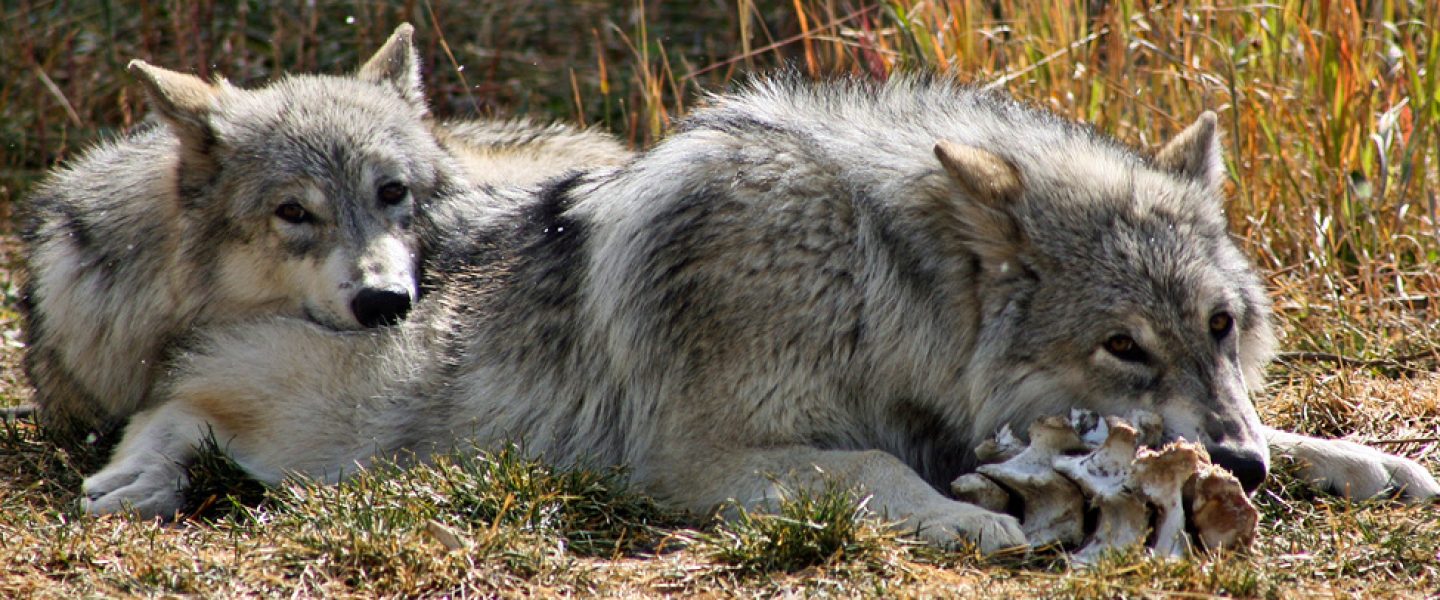PICKS are stories from many sources, selected by our editors or recommended by our readers because they are important, surprising, troubling, enlightening, inspiring, or amusing. They appear on our site and in our daily newsletter. Please send suggested articles, videos, podcasts, etc. to picks@whowhatwhy.org.
|
Listen To This Story
|
Wolves Have Returned to California After Nearly 150 Years. Not Everyone Is Happy. (Maria)
The author writes, “The land on the reservation is high desert meets alpine, 55,000 acres of scrub and redwoods bordering Sequoia national forest. About two years ago, the reservation — which has more cattle than people — was devastated by the Windy fire, which sparked in 2021 after lightning struck here. … ‘But it opened up the forest, which is good,’ says [California rancher William] McDarment, who spent 30 years fighting wildfires for the US Forest Service. Fires supercharged grass growth, providing food for cows, and helping cash-strapped cowboys like him who rely on the land. The fires brought another change: wolves. After the blaze, the reservation became a perfect place for den sites and hunting.”
Things to Know About Efforts to Block People From Crossing State Lines for Abortion (Reader Steve)
The author writes, “A federal judge and the U.S. Department of Justice this week said that states are going too far by trying to block people from helping others cross state lines for abortion. A ruling in Idaho and the federal government taking sides in an Alabama lawsuit are far from the final word, but they could offer clues on whether an emerging area of abortion regulation may eventfully hold up in court. Since the U.S. Supreme Court overturned Roe v. Wade last year, eliminating a nationwide right to abortion, most Republican-controlled states have implemented bans or tighter restrictions on abortion. Meanwhile, most blue states have taken some action to protect access, as have red states where voters have had a direct say on the issue.”
The Key to Mike Johnson’s Christian Extremism Hangs Outside His Office (Dana)
From Rolling Stone: “The American public has had much to learn about Mike Johnson over the past two weeks. Until his surprise elevation to House speaker, the Louisiana representative was an obscure, mild-mannered, and bookish four-term back-bencher. He is a former constitutional lawyer and hardly the type of political figure who jeers during a State of the Union address, or gets caught in a Beetlejuice groping scandal, or shows up on cable news to take a victory lap after ousting the leader of his own party. Johnson is focused, methodical, and up until now was happy to operate behind the scenes. He’s also a dyed-in-the-wool Christian conservative, and there’s a flag hanging outside his office that leads into a universe of right-wing religious extremism as unknown to most Americans as Johnson was before he ascended to the speakership.”
How Climate Change Drives Conflict and War Crimes Around the Globe (Laura)
From Inside Climate News: “Human rights advocates want the International Criminal Court to begin gathering evidence on the way climate-amplified extreme weather, heat, drought and flooding are driving armed conflict, crimes against humanity and war crimes.”
The First Small-Scale Nuclear Plant in the US Died Before It Could Live (Reader Jim)
From Wired: “The plan for the first small-scale US nuclear reactor was exciting, ambitious, and unusual from the get-go. In 2015, a group of city- and county-run utilities across the Mountain West region announced that they were betting on a new frontier of nuclear technology: a mini version of a conventional plant called a ‘small modular reactor.’ Advocates said the design, just 9 feet in diameter and 65 feet tall, was poised to resurrect the US nuclear industry, which has delivered only two completed reactors this century. It was supposed to prove out a dream that smaller, modular designs can make splitting atoms to boil water and push turbines with steam much cheaper. But first that reactor, the Voygr model designed by a startup called NuScale, had to be built. A six-reactor, 462-megawatt plant was slated to begin construction by 2026 and produce power by the end of the decade. [Last week], NuScale and its backers pulled the plug on the multibillion-dollar Idaho Falls plant.”
Physicists Simulated a Black Hole in The Lab. Then It Started to Glow. (Sean)
The author writes, “A black hole analog could tell us a thing or two about an elusive radiation theoretically emitted by the real thing. Using a chain of atoms in single-file to simulate the event horizon of a black hole, a team of physicists in 2022 observed the equivalent of what we call Hawking radiation — particles born from disturbances in the quantum fluctuations caused by the black hole’s break in spacetime. This, they say, could help resolve the tension between two currently irreconcilable frameworks for describing the Universe: the general theory of relativity, which describes the behavior of gravity as a continuous field known as spacetime; and quantum mechanics, which describes the behavior of discrete particles using the mathematics of probability.”




